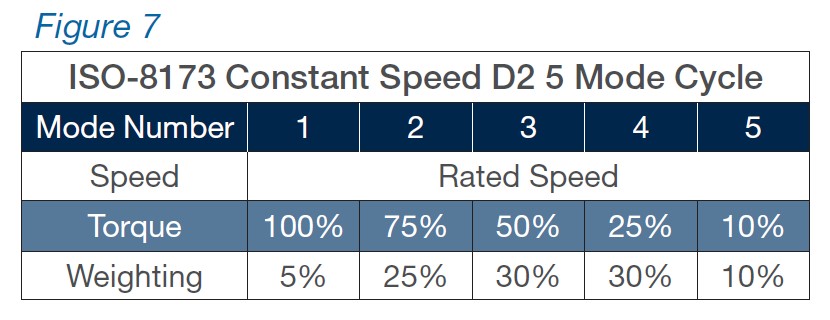
The Environmental Protection Agency (EPA) of the United States is tasked with enforcing federal directives for emission levels resulting from on-highway and off-road engines. The EPA’s main concern is curtailing the following pollutants: sulfur dioxide, carbon monoxide, nitrogen oxides, particulate matter, ozone, and lead. They achieve this by setting and implementing progressively rigorous emission standards within the country. This article will outline the three chief EPA regulations impacting generator set usage throughout the nation.
The EPA must certify all new diesel engines introduced in the United States in accordance with their intended use. Engine manufacturers typically carry out the engine certifications, and the process involves ensuring these engines comply with relevant regulations throughout their lifespan. A Certificate of Conformity (CoC) issued by the EPA signifies that an engine has undergone and passed these tests. A compliant engine is one that satisfies an EPA emission standard without being explicitly certified by the EPA. It is often implemented to meet local regulations which have lower emission requirements than federal EPA laws.
DEFINING USAGE TYPE
EPA subpart ZZZZ defines emergency engines as those that meet the following operational prerequisites: • Unrestricted use during emergencies (e.g., power outage, fire, flood) • Emergency engines are permitted for 100 hr/yr for maintenance/testing • 50 hr/yr of the above allowance can be employed for: ° Non-emergency situations without financial agreements ° Local stability as part of a financial deal with another entity, provided specific criteria are met (existing RICE at area sources of HAP) Non-emergency engines are those that do not meet the criteria for emergency use only.
Note: The EPA does not regulate generator sets and, as such, does not consider the generator rating as indicative of its use. The ISO-8528 ratings are frequently discussed in conjunction with required emissions compliance levels, but having an emergency use generator with a Prime or Continuous rating does not infringe on any regulations.
PLACEMENT OF ENGINES
A stationary off-highway engine is one that is indefinitely mounted in a fixed location. Also, an engine deemed movable nonroad is classified as stationary if it remains in a single position for over 12 months.
CLASSIFICATION OF SITES
Site classification applies to the complete connected complex containing the engine. There are two categories of site classifications. Major sources emit either a single hazardous air pollutant at the rate of 10 tons per annum or any combination of such pollutants exceeding 25 tons per year. Area sources refer to any sources that are not categorized as major sources.
ISO-8528 GENERATOR RATINGS
Standby – a standby generator is typically used for generators with stationary emergency engines. Prime – a prime rating is typically used for generators with stationary nonemergency engines or nonroad engines for mobile applications.
NESHAP for RICE: Terminology and Definition
Title 40, part 63, subpart ZZZZ (63.6580) of the Code of Federal Regulations covers the National Emission Standards for Hazardous Air Pollutants (NESHAP) for reciprocating internal combustion engines (RICE). New engines required to conform to the New Source Performance Standards, such as combustion ignition (CI) engines, comply with RICE NESHAP and require no further measures. Responsibility for compliance rests with the engine owner.
Focus of NESHAP
The regulation aims to reduce emissions from nonregulated non-emergency engines. The EPA has identified carbon monoxide (CO) as the most effective indicator of these pollutants. Accordingly, the regulation seeks to reduce the percentage of CO emissions produced by the engine. The table in Figure 1 provides an overview of the percentage reduction in CO emissions required to bring an affected engine into compliance.
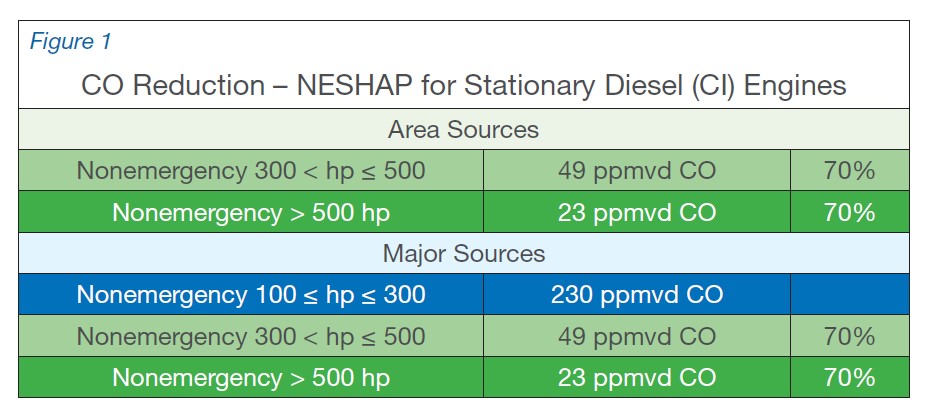
NONROAD DIESEL ENGINES
The CFR under Title 40, part 1039, previously part 89, governs the EPA emission standards for nonroad diesel engines. Such regulations apply to a broad scope of construction, agricultural, and industrial equipment. Diesel generators intended for transport must comply with nonroad diesel emission regulations. Figure 2 shows the various iterations, known as Tiers, made to enforce increasingly stringent requirements since the standards were first introduced in 1994.
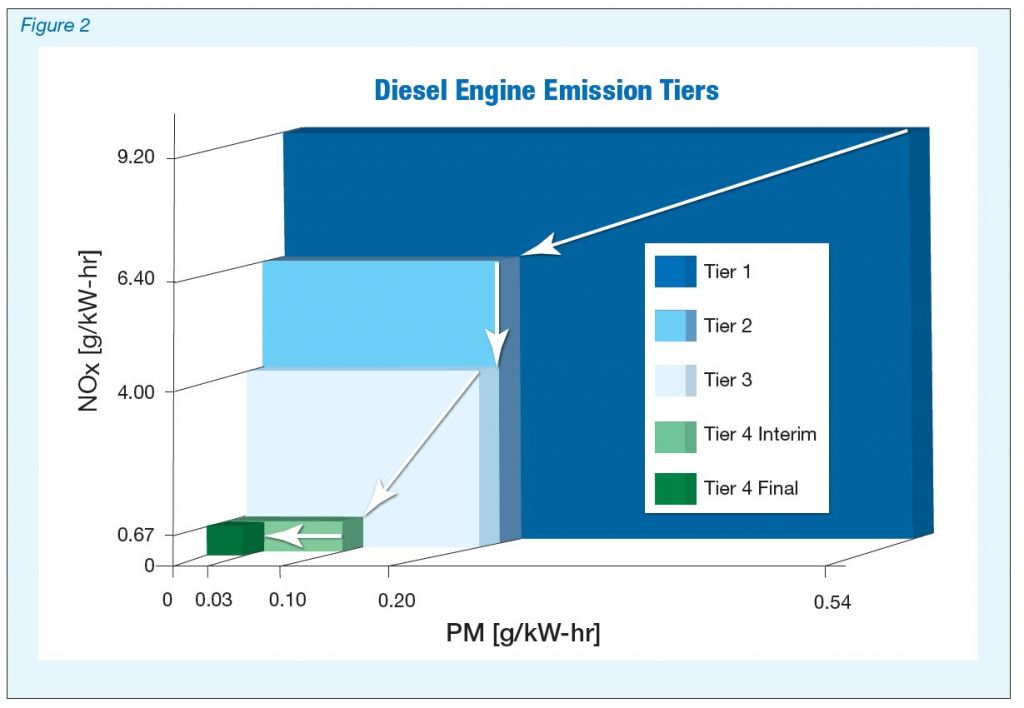
TIER 4 REGULATIONS
Tier 4 regulations, announced in 2004 with a phase-in period from 2008-2015, mandate up to a 90 percent decrease in NOx and PM levels from previous Tiers, necessitating the use of exhaust aftertreatment systems. See Figure 3 and Figure 4 for further details.
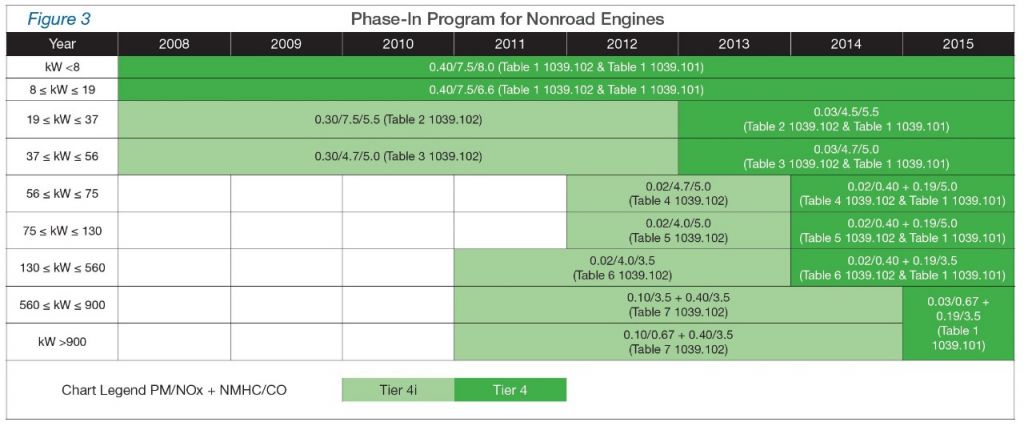

NSPS FOR CI STATIONARY ENGINES
Title 40, part 60, subpart IIII of the CFR outlines the New Source Performance Standards (NSPS) for stationary internal combustion engines. For information on related diesel engine exhaust aftertreatment systems, reference the white paper: Diesel Generator Emissions Technologies and Aftertreatment Devices. Figure 5 covers the phase-in program for stationary nonemergency engines. Stationary emergency engines have the special exemptions under NSPS regulations as shown in Figure 6. It worth noting the implications of using diesel generators for non-emergency applications.
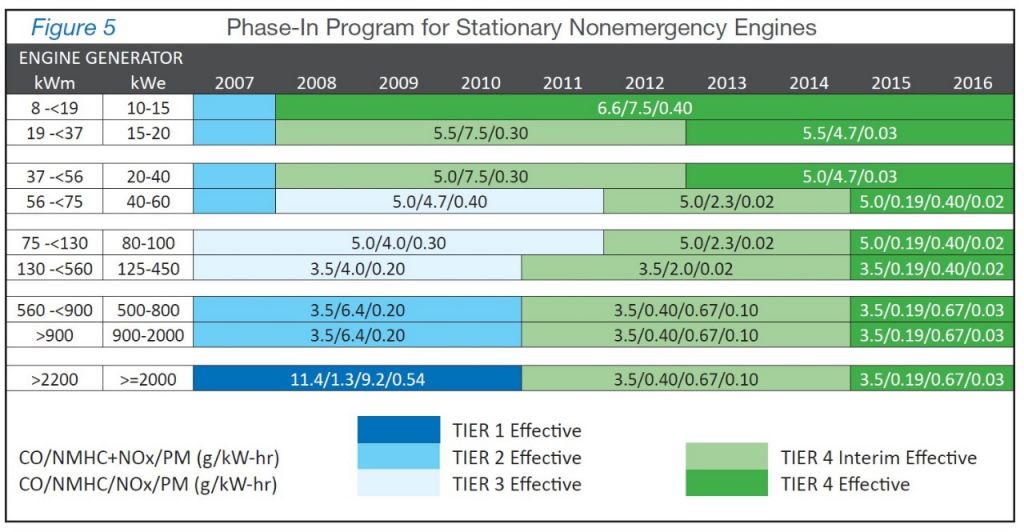
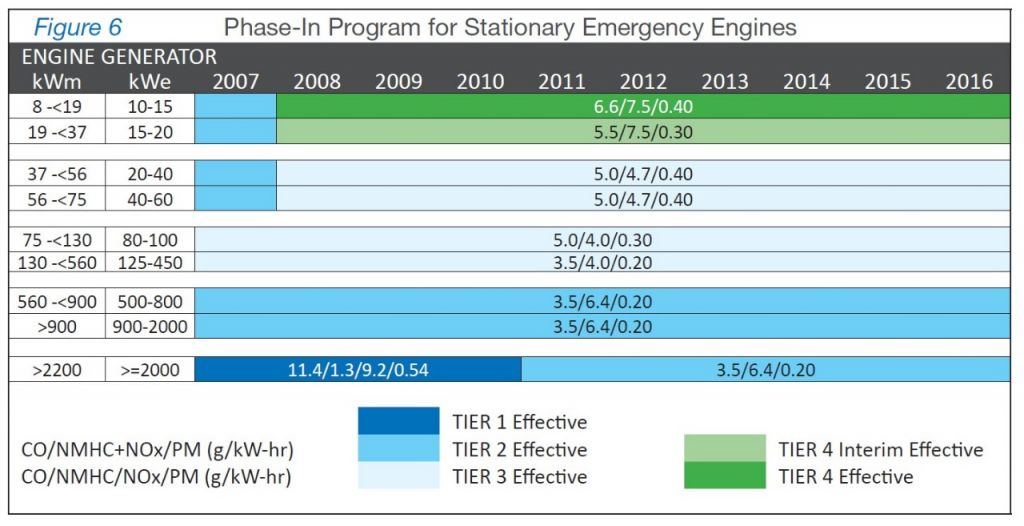
AFTER-TREATMENT SYSTEM FAILURE
For Tier 4 systems, after-treatment systems are considered integral parts. Therefore, according the EPA regulations, a failure of this system, often referred to as inducement, warrants immediate attention and subsequent action. In an effort not to interrupt critical power requirements, the EPA allows reasonable time for the repair of the after-treatment system.
With this explanation, we’ve covered some of the complexity of EPA Emission Standards as they relate to diesel generators. However, understanding the intricate details can be quite challenging due to the breadth and depth of the subject. For clarity on some of the discussed points, please refer to Figure 7, which provides a comprehensive graphic representation.
